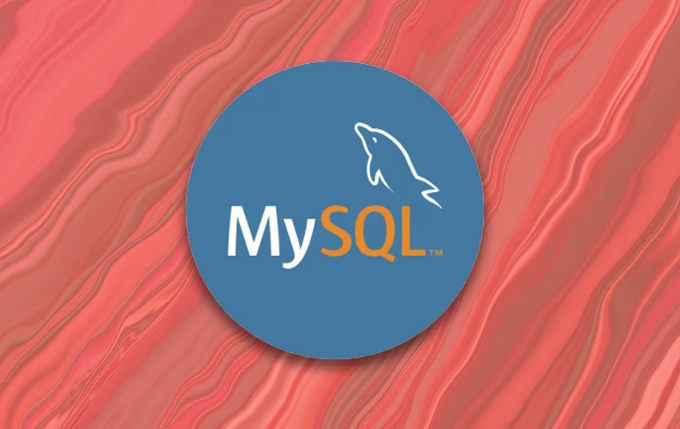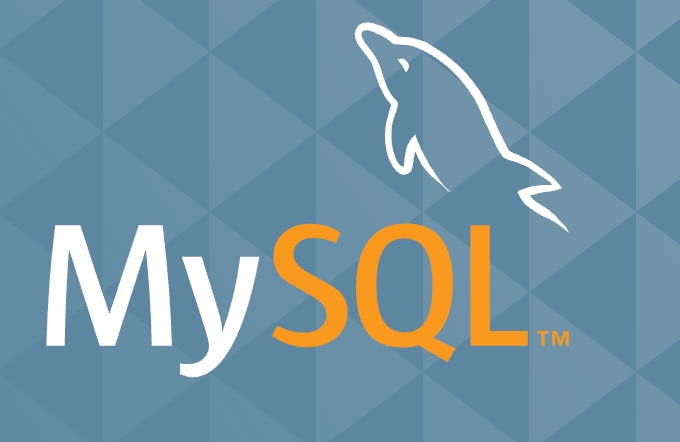mysql workbench lost connection to mysql server during query
Jun 30, 2025 am 01:41 AMWhen an error "Lost connection to MySQL server during query" appears, the server timeout setting, packet size limit, network status and client connection parameters should be checked and adjusted first. The specific steps are as follows: 1. Check and increase the wait_timeout and interactive_timeout parameters to extend the idle connection hold time; 2. Increase the max_allowed_packet value to support larger data transmission; 3. Use ping or traceroute to check network delays and packet loss, and confirm that the firewall or security group has not interrupted connections; 4. Increase the connection and execution timeout in MySQL Workbench, or consider using command-line tools to execute complex queries instead. The above methods can effectively solve the connection problem.

The error "Lost connection to MySQL server during query" occurs when connecting to MySQL server, which is a common problem that many users encounter when using MySQL Workbench. This problem usually occurs when performing more complex queries, large data volume operations, or network instability. Below are some common causes and corresponding solutions that can help you quickly troubleshoot and solve problems.

Check server response time and timeout settings
MySQL has some connection and waiting time limits by default. If the query is executed for too long, it may be disconnected by the server. Several common parameters include:

-
wait_timeout -
interactive_timeout
These two parameters control the maximum idle time (in seconds) of the connection after no activity. The default value is usually 28800 (ie 8 hours), but may be shorter in some server configurations.
suggestion:

- You can view the current settings through the following statement:
SHOW VARIABLES LIKE 'wait_timeout'; SHOW VARIABLES LIKE 'interactive_timeout';
- If you find that the value is too small, you can modify it in the MySQL configuration file (such as
my.cnformy.ini):[mysqld] wait_timeout = 28800 interactive_timeout = 28800
- After modification, restarting the MySQL service takes effect.
Increase max_allowed_packet to increase data transmission upper limit
If you are executing a query involving a large amount of data insertion or export, you may also be disconnected from the server because the packet is too large. At this time, you need to check and adjust max_allowed_packet parameter.
suggestion:
- Check the maximum packet size currently allowed:
SHOW VARIABLES LIKE 'max_allowed_packet';
- If the result is too small (such as the default 4M), you can adjust it appropriately:
[mysqld] max_allowed_packet = 64M
- MySQL is also required to be restarted before it takes effect.
Check network status and firewall settings
If the database is deployed on a remote server, network latency or instability can also cause connection interruption. Especially when accessing across regions and across network environments, packet loss or high latency can lead to communication failure.
suggestion:
- Use
pingortracerouteto check network connectivity and latency. - Confirm whether the server-side firewall restricts certain connection behaviors, such as disconnection without data interaction for a long time.
- If using a cloud server, check whether the security group rules have restricted the database port.
Adjust client connection settings (MySQL Workbench)
Sometimes the problem is not on the server side, but the unreasonable local settings of MySQL Workbench cause connection interruption.
suggestion:
- In the connection settings, increase the values ??of "Connection timeout" and "SQL Execution timeout".
- Path: Open a connection → Click "Edit Connection" → Adjust the relevant timeout options in the "System" tab.
- If you run slow queries frequently, you can also consider using command-line tools instead of Workbench to avoid the additional burden of the graphical interface.
The above situations are the common reasons for "lost connection during query". The most commonly overlooked are the wait_timeout and max_allowed_packet settings on the server side, especially when you just take over an already configured server, these parameters may have been modified. In addition, although network problems may seem simple, they often require patience when troubleshooting, especially when connecting across multiple network nodes.
Basically all this is it, the problem is not complicated, but details are easy to ignore.
The above is the detailed content of mysql workbench lost connection to mysql server during query. For more information, please follow other related articles on the PHP Chinese website!

Hot AI Tools

Undress AI Tool
Undress images for free

Undresser.AI Undress
AI-powered app for creating realistic nude photos

AI Clothes Remover
Online AI tool for removing clothes from photos.

Clothoff.io
AI clothes remover

Video Face Swap
Swap faces in any video effortlessly with our completely free AI face swap tool!

Hot Article

Hot Tools

Notepad++7.3.1
Easy-to-use and free code editor

SublimeText3 Chinese version
Chinese version, very easy to use

Zend Studio 13.0.1
Powerful PHP integrated development environment

Dreamweaver CS6
Visual web development tools

SublimeText3 Mac version
God-level code editing software (SublimeText3)

Hot Topics
 What is GTID (Global Transaction Identifier) and what are its advantages?
Jun 19, 2025 am 01:03 AM
What is GTID (Global Transaction Identifier) and what are its advantages?
Jun 19, 2025 am 01:03 AM
GTID (Global Transaction Identifier) ??solves the complexity of replication and failover in MySQL databases by assigning a unique identity to each transaction. 1. It simplifies replication management, automatically handles log files and locations, allowing slave servers to request transactions based on the last executed GTID. 2. Ensure consistency across servers, ensure that each transaction is applied only once on each server, and avoid data inconsistency. 3. Improve troubleshooting efficiency. GTID includes server UUID and serial number, which is convenient for tracking transaction flow and accurately locate problems. These three core advantages make MySQL replication more robust and easy to manage, significantly improving system reliability and data integrity.
 What is a typical process for MySQL master failover?
Jun 19, 2025 am 01:06 AM
What is a typical process for MySQL master failover?
Jun 19, 2025 am 01:06 AM
MySQL main library failover mainly includes four steps. 1. Fault detection: Regularly check the main library process, connection status and simple query to determine whether it is downtime, set up a retry mechanism to avoid misjudgment, and can use tools such as MHA, Orchestrator or Keepalived to assist in detection; 2. Select the new main library: select the most suitable slave library to replace it according to the data synchronization progress (Seconds_Behind_Master), binlog data integrity, network delay and load conditions, and perform data compensation or manual intervention if necessary; 3. Switch topology: Point other slave libraries to the new master library, execute RESETMASTER or enable GTID, update the VIP, DNS or proxy configuration to
 How to connect to a MySQL database using the command line?
Jun 19, 2025 am 01:05 AM
How to connect to a MySQL database using the command line?
Jun 19, 2025 am 01:05 AM
The steps to connect to the MySQL database are as follows: 1. Use the basic command format mysql-u username-p-h host address to connect, enter the username and password to log in; 2. If you need to directly enter the specified database, you can add the database name after the command, such as mysql-uroot-pmyproject; 3. If the port is not the default 3306, you need to add the -P parameter to specify the port number, such as mysql-uroot-p-h192.168.1.100-P3307; In addition, if you encounter a password error, you can re-enter it. If the connection fails, check the network, firewall or permission settings. If the client is missing, you can install mysql-client on Linux through the package manager. Master these commands
 Why do indexes improve MySQL query speed?
Jun 19, 2025 am 01:05 AM
Why do indexes improve MySQL query speed?
Jun 19, 2025 am 01:05 AM
IndexesinMySQLimprovequeryspeedbyenablingfasterdataretrieval.1.Theyreducedatascanned,allowingMySQLtoquicklylocaterelevantrowsinWHEREorORDERBYclauses,especiallyimportantforlargeorfrequentlyqueriedtables.2.Theyspeedupjoinsandsorting,makingJOINoperation
 Why is InnoDB the recommended storage engine now?
Jun 17, 2025 am 09:18 AM
Why is InnoDB the recommended storage engine now?
Jun 17, 2025 am 09:18 AM
InnoDB is MySQL's default storage engine because it outperforms other engines such as MyISAM in terms of reliability, concurrency performance and crash recovery. 1. It supports transaction processing, follows ACID principles, ensures data integrity, and is suitable for key data scenarios such as financial records or user accounts; 2. It adopts row-level locks instead of table-level locks to improve performance and throughput in high concurrent write environments; 3. It has a crash recovery mechanism and automatic repair function, and supports foreign key constraints to ensure data consistency and reference integrity, and prevent isolated records and data inconsistencies.
 What are the transaction isolation levels in MySQL, and which is the default?
Jun 23, 2025 pm 03:05 PM
What are the transaction isolation levels in MySQL, and which is the default?
Jun 23, 2025 pm 03:05 PM
MySQL's default transaction isolation level is RepeatableRead, which prevents dirty reads and non-repeatable reads through MVCC and gap locks, and avoids phantom reading in most cases; other major levels include read uncommitted (ReadUncommitted), allowing dirty reads but the fastest performance, 1. Read Committed (ReadCommitted) ensures that the submitted data is read but may encounter non-repeatable reads and phantom readings, 2. RepeatableRead default level ensures that multiple reads within the transaction are consistent, 3. Serialization (Serializable) the highest level, prevents other transactions from modifying data through locks, ensuring data integrity but sacrificing performance;
 What are the ACID properties of a MySQL transaction?
Jun 20, 2025 am 01:06 AM
What are the ACID properties of a MySQL transaction?
Jun 20, 2025 am 01:06 AM
MySQL transactions follow ACID characteristics to ensure the reliability and consistency of database transactions. First, atomicity ensures that transactions are executed as an indivisible whole, either all succeed or all fail to roll back. For example, withdrawals and deposits must be completed or not occur at the same time in the transfer operation; second, consistency ensures that transactions transition the database from one valid state to another, and maintains the correct data logic through mechanisms such as constraints and triggers; third, isolation controls the visibility of multiple transactions when concurrent execution, prevents dirty reading, non-repeatable reading and fantasy reading. MySQL supports ReadUncommitted and ReadCommi.
 How to add the MySQL bin directory to the system PATH
Jul 01, 2025 am 01:39 AM
How to add the MySQL bin directory to the system PATH
Jul 01, 2025 am 01:39 AM
To add MySQL's bin directory to the system PATH, it needs to be configured according to the different operating systems. 1. Windows system: Find the bin folder in the MySQL installation directory (the default path is usually C:\ProgramFiles\MySQL\MySQLServerX.X\bin), right-click "This Computer" → "Properties" → "Advanced System Settings" → "Environment Variables", select Path in "System Variables" and edit it, add the MySQLbin path, save it and restart the command prompt and enter mysql--version verification; 2.macOS and Linux systems: Bash users edit ~/.bashrc or ~/.bash_






